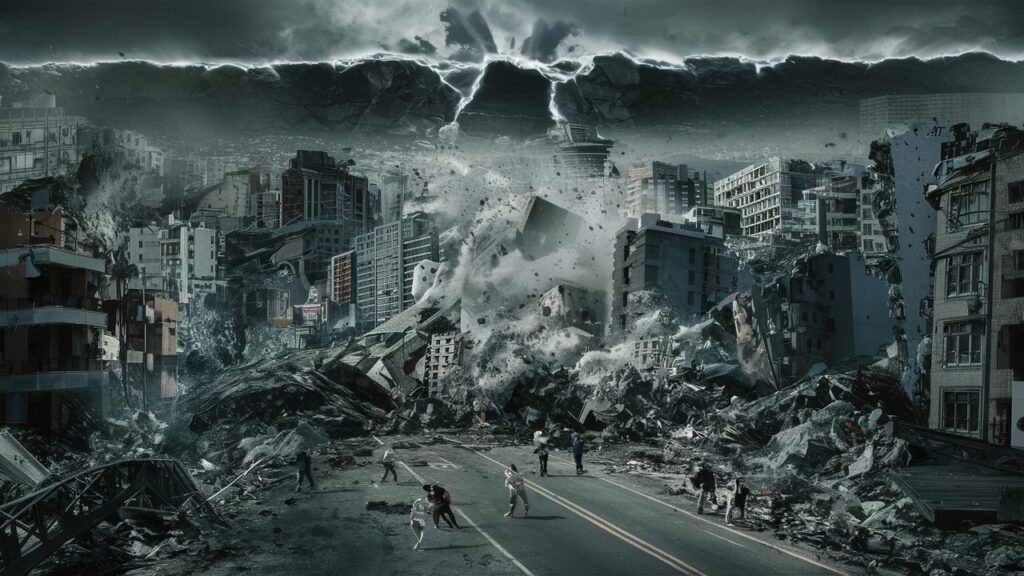Taiwan Rocked by Strongest Earthquake in Nearly 25 Years, Causing Widespread Destruction and Loss of Life

A powerful 7.4 magnitude earthquake struck Taiwan’s east coast on Wednesday morning, causing extensive damage, triggering tsunami warnings, and resulting in at least nine deaths and over 900 injuries. The quake, which hit at 7:58 a.m. local time (2358 GMT), was the strongest to strike the island nation in nearly 25 years, with its epicenter located 18 kilometers (11 miles) south of Hualien City at a depth of 34.8 kilometers (21 miles).
The tremors were felt across the island, including in the capital, Taipei, where residents reported strong shaking lasting for several minutes. The earthquake caused widespread destruction, with collapsed buildings, landslides, and rockfalls reported in the affected areas.
Widespread Destruction and Rescue Efforts

The earthquake caused widespread destruction across the island, with collapsed buildings, landslides, and rockfalls reported in the affected areas. In Hualien County, the epicenter of the quake, at least 75 people were rescued from various tunnels, while 137 remain trapped, including 50 employees of the Silk’s Place Hotel Taroko who were traveling in four minibuses.
Tragically, nine people have been confirmed dead, including three hikers killed by falling rocks in the popular tourist destination Taroko Gorge and a truck driver who was struck by falling rocks in front of a tunnel on the east coast’s Suhua Highway. More than 900 people have been reported injured, with the severity of their injuries yet to be determined.
Rescue efforts are ongoing, with military personnel dispatched to assist with disaster relief. The government has suspended work and school in the affected areas and closed down eight power plants as a precautionary measure. Emergency responders are working tirelessly to locate and rescue those still trapped in the rubble of collapsed buildings and tunnels.
Infrastructure Disruptions and Economic Impact
The quake has caused significant disruptions to infrastructure, with thousands of homes left without power and major highways closed due to landslides and rockfalls. Taiwan’s transportation authorities have suspended train service island-wide and subway service in Taipei, hindering the movement of people and goods across the island.
TSMC, the world’s leading maker of cutting-edge microchips, evacuated production lines following the quake, highlighting the potential economic impact of the disaster on Taiwan’s crucial semiconductor industry. The company is working to assess the damage to its facilities and restore operations as quickly as possible.
The earthquake also triggered initial tsunami warnings for Taiwan, southern Japan, and the Philippines, which were later lifted. However, waves of up to 30 centimeters (about 1 foot) were detected on the coast of Yonaguni island in Japan, demonstrating the far-reaching impact of the quake.

Aftershocks and Historical Context

Taiwan’s Central Weather Administration has warned that powerful aftershocks as high as magnitude 7 are expected to occur until the end of the week, posing ongoing risks to the affected areas. Residents are advised to stay vigilant and prepared for further seismic activity.
The island, located on the Pacific Ring of Fire, is no stranger to seismic activity, with the last earthquake of a magnitude 7 or greater occurring in 1999, which resulted in the deaths of more than 2,400 people and injured over 10,000 others. The 1999 earthquake, known as the “921 Earthquake,” had a magnitude of 7.7 and caused extensive damage across the island.
The current earthquake serves as a sobering reminder of the ever-present threat of natural disasters in the region and the importance of preparedness and resilience in the face of such challenges. Taiwan has made significant strides in improving its earthquake preparedness and response capabilities since the 1999 disaster, but the recent quake underscores the need for ongoing efforts to protect lives and infrastructure.
Taiwan's Road to Recovery

As Taiwan grapples with the aftermath of this devastating earthquake, the nation mourns the loss of life and rallies to support those affected by the disaster. Rescue efforts continue in the hopes of saving those still trapped and providing assistance to the injured and displaced.
The government, along with local and international aid organizations, is working to provide emergency shelter, food, and medical care to those impacted by the quake. The road to recovery will be long and challenging, as communities work to rebuild homes, businesses, and infrastructure damaged by the disaster.
The international community has expressed its condolences and offered support to Taiwan during this difficult time. The solidarity and resilience demonstrated by the Taiwanese people in the face of this tragedy serve as an inspiration to the world, as the nation begins the process of healing and reconstruction.



